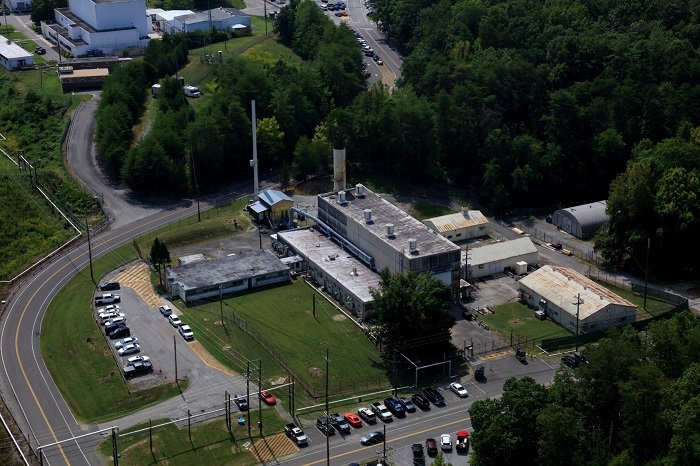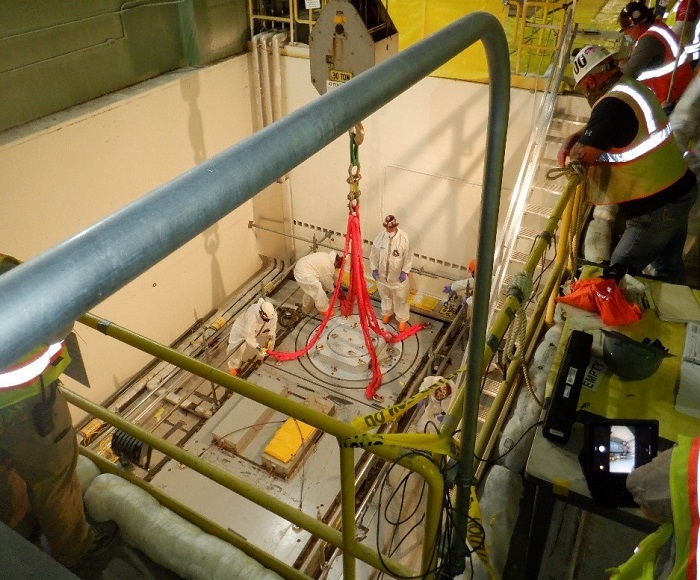
The U.S. Department of Energy is upgrading a historic reactor in Oak Ridge to keep the facility safe until it can be demolished.
The reactor, the Molten Salt Reactor Experiment, is at Oak Ridge National Laboratory, and it was shut down nearly 50 years ago. At some point, the MSRE will be deactivated, and that will save about $5 million in annual operating costs, a press release said.
The work is being overseen by the DOE Oak Ridge Office of Environmental Management.
“We have the important responsibility of keeping it safe until major cleanup operations begin,†said Nathan Felosi, EM’s ORNL portfolio federal project director. “The latest round of projects is making sure that’s the case and achieving considerable cost savings to taxpayers.â€
MSRE is one of more than 200 facilities in Oak Ridge that no longer support ongoing missions, the press release said.
“The Oak Ridge Office of Environmental Management and its contractor UCOR are tasked with keeping many of these facilities in a safe, stable condition, and together they examine ways to reduce costs without compromising safety as these facilities await deactivation and demolition,” the release said.

Since MSRE is still classified as an active nuclear facility with a deactivated nuclear reactor, numerous upgrades are needed to keep critical systems safe until the facility is torn down. UCOR is making upgrades and modifications that minimize maintenance costs, reduce risks of injury and exposure to personnel, provide reliable electric service to key systems, and eventually eliminate the need for personnel to work at the facility, the press release said.
One challenge inside part of the MSRE is that gas pressure can build up from fluorine gases in tanks. To help, there is a new continuous purge system that will provide safe continuous “off-gassing,” instead of allowing the pressure to build up, and it is scheduled to begin operating next year.
“This project is also reducing risks by replacing an old reactive gas removal system, which has exceeded its operational life expectancy,” the press release said.
Workers are also installing a new roof over a portion of the facility to protect key systems such as the reactor and containment ventilation systems. UCOR is also relocating employees stationed in MSRE to nearby offices to further reduce the possibility of hazards, the press release said.

Construction of MSRE began in 1962. Test runs began in 1965 using uranium-235 as fuel. The reactor reached full power in 1966. Two years later, scientists added uranium-233 to demonstrate the design’s flexibility, making it the first reactor in the world to operate with uranium-233. Famed scientist Glenn Seaborg, discoverer of plutonium and creator of uranium-233, came to ORNL to start the reactor.
The facility was inspired by a short-lived effort to develop a nuclear-powered aircraft in the 1950s. After that initiative was cancelled, focus shifted to using MSRE technology to generate electricity. Concerns about long-term uranium supplies made this concept more attractive because of its ability to function as a “breeder,†producing more fuel than it consumed.
MSRE was shut down in 1973 in favor of a sodium-cooled fast breeder reactor that was planned for construction — but never built — in Oak Ridge.
Original story contributed by Shannon Potter, edited by Oak Ridge Today.
More information will be added as it becomes available.
Most news stories on Oak Ridge Today are free, brought to you by Oak Ridge Today with help from our advertisers, contributors, and subscribers. This is a free story. Thank you to our advertisers, contributors, and subscribers. You can see what we cover here.
Do you appreciate this story or our work in general? If so, please consider a monthly subscription to Oak Ridge Today. See our Subscribe page here. Thank you for reading Oak Ridge Today!
Alternatively, you can donate to support our work here. Thank you for your support!
Copyright 2021 Oak Ridge Today. All rights reserved. This material may not be published, broadcast, rewritten, or redistributed.





Leave a Reply